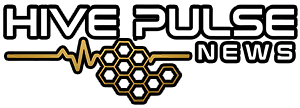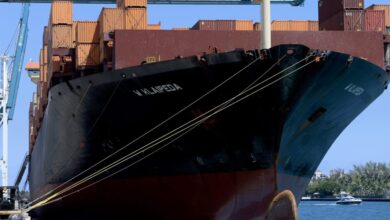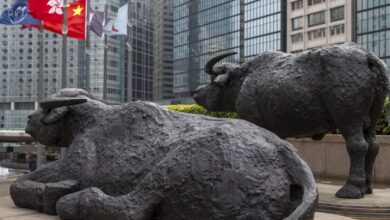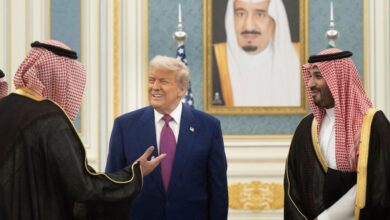Donald Trump announces sweeping reciprocal tariffs against ‘friend and foe’ with a 10% minimum
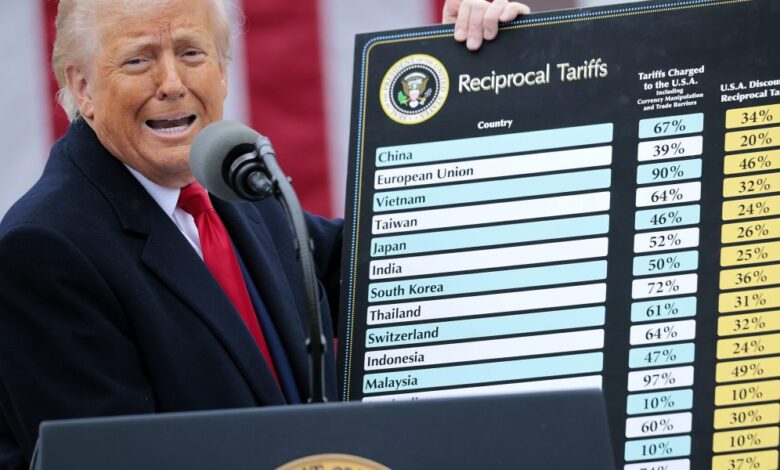

- President Donald Trump announced long-awaited reciprocal tariffs on America’s trading partners Wednesday. The U.S. will impose tariffs at about half of what other countries do, with a minimum 10% tax. “We subsidize a lot of countries,” the president said. “We’re not taking it anymore.”
It’s a day of tariffs that President Donald Trump vowed would “make America wealthy again.”
Trump on Wednesday announced sweeping reciprocal tariffs with the U.S.’ trading partners, to be set at about half of what other countries are charging America. The U.S. will impose a 10% minimum tariff, too, Trump said in a speech from the White House Rose Garden.
“They do it to us, we do it to them,” Trump said during the event, saying it was America’s turn to prosper.
As the president delivered his speech, he held up a sign dense with charts, and shared specific examples: China taxes the United States 67%—a number Trump said accounted for currency manipulation—so the United States will tax China 34%. The European Union’s total levies against the U.S. amount to 39%, so the U.S. will tax about 20%, Trump said. The U.S. will impose 25% on South Korea, 24% on Japan and 32% on Taiwan.
“None of our companies are allowed to go into other countries,” he said. “I say that, friend and foe, and in many cases the friend is worse than the foe.”
Trump also reaffirmed that he would place 25% tariffs on foreign-made cars and parts, effective midnight. “We subsidize a lot of countries,” the president said, blaming the trade deficit for the U.S.’ debt problem. “We’re not taking it anymore.”
Even before Trump’s Election Day victory, some economists warned the tariffs he promised on the campaign trail could be inflationary. Ever since, his on-again, off-again tariffs and the threat of a global trade war not only pushed the S&P 500 into correction territory and tanked consumer sentiment, but set off recession calls from big banks and others in the finance world. It’s kept the central bank in wait-and-see mode, too, when it comes to interest rates.
The fear surrounding the levies is that when companies face an extra tax on imported goods, they tend to pass those costs on to consumers. Americans are still suffering from exorbitant prices after inflation hit a scorching-hot four-decade high almost three years ago. The Federal Reserve itself sees tariff-induced inflation coming, even if it may be transitory. If business and consumer spending declines as a result of price hikes, it could slow economic activity and even usher in stagflation—a mix of stagnant growth and elevated inflation. One think tank recently called tariffs “a recipe for making Americans worse off.”
This story was originally featured on Fortune.com
https://fortune.com/img-assets/wp-content/uploads/2025/04/GettyImages-2208184612-e1743626729907.jpg?resize=1200,600
2025-04-02 20:55:44
